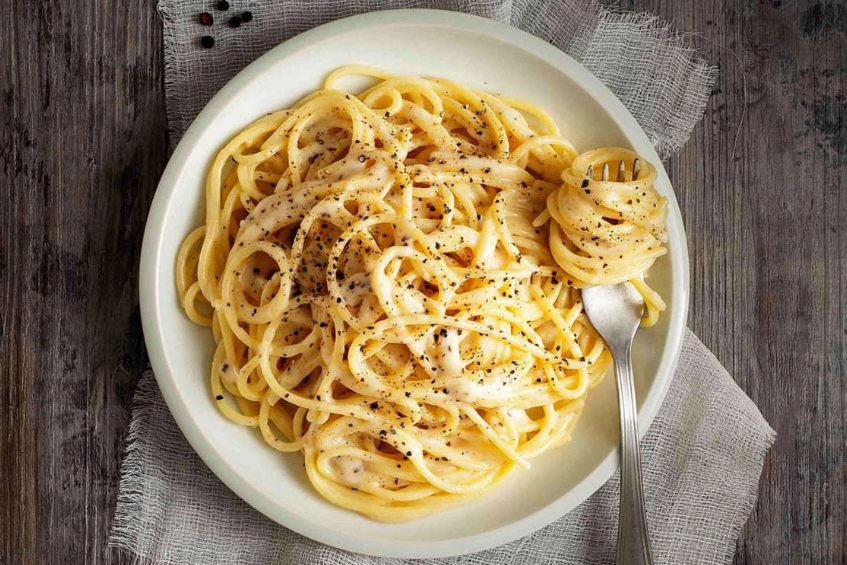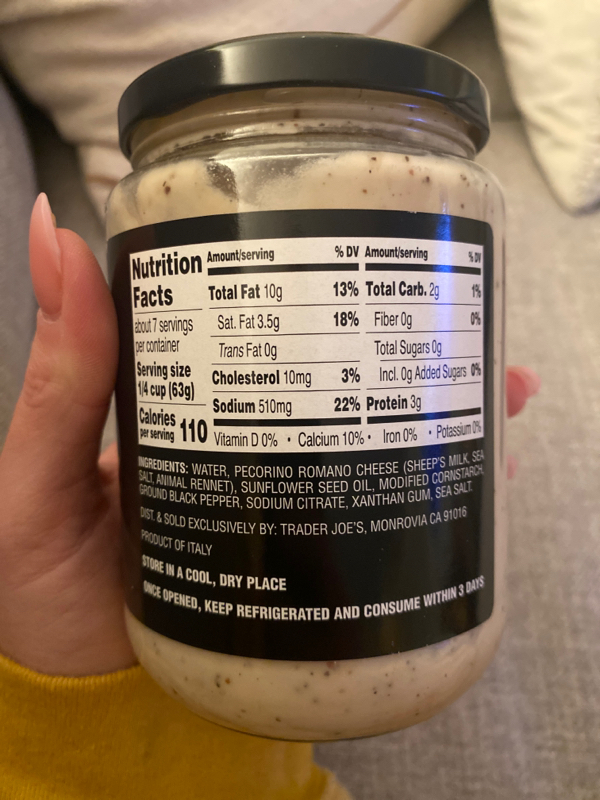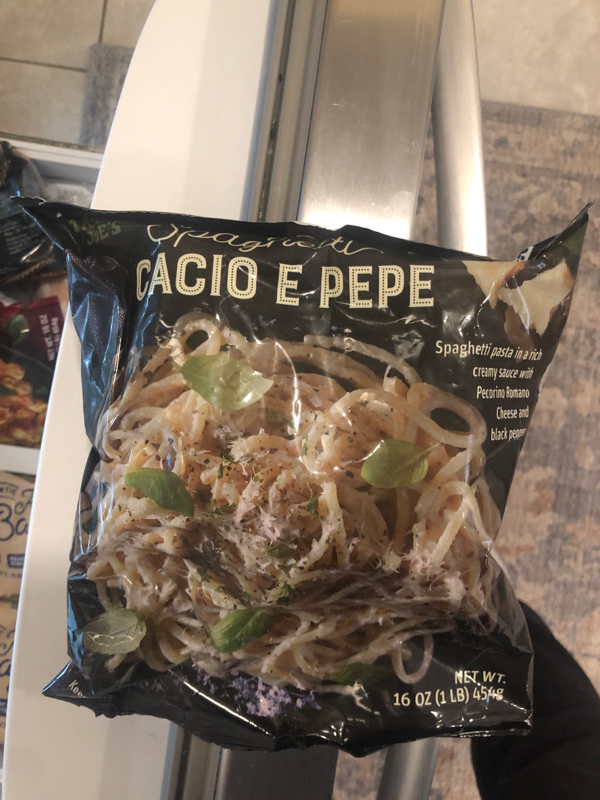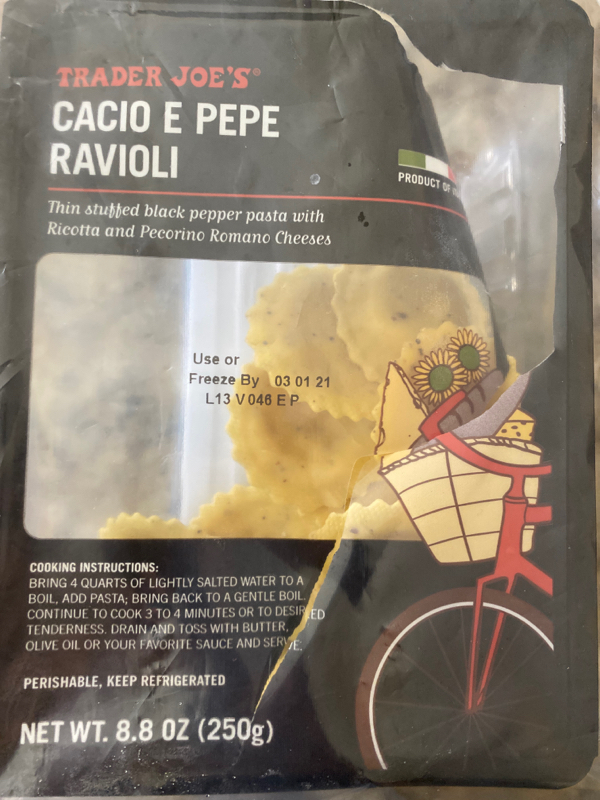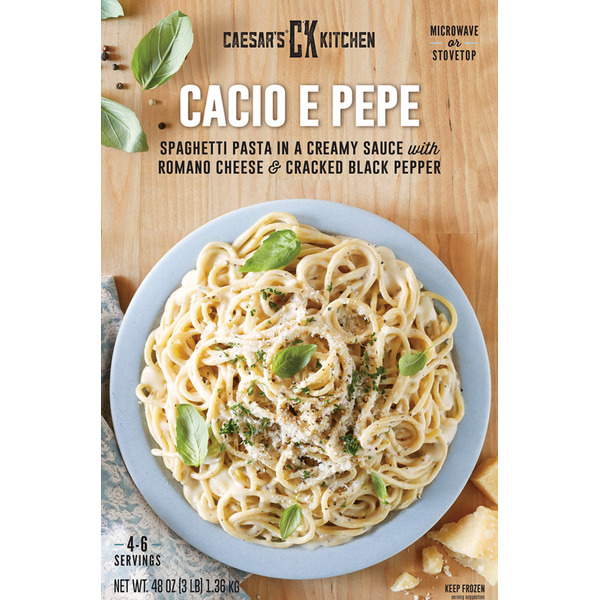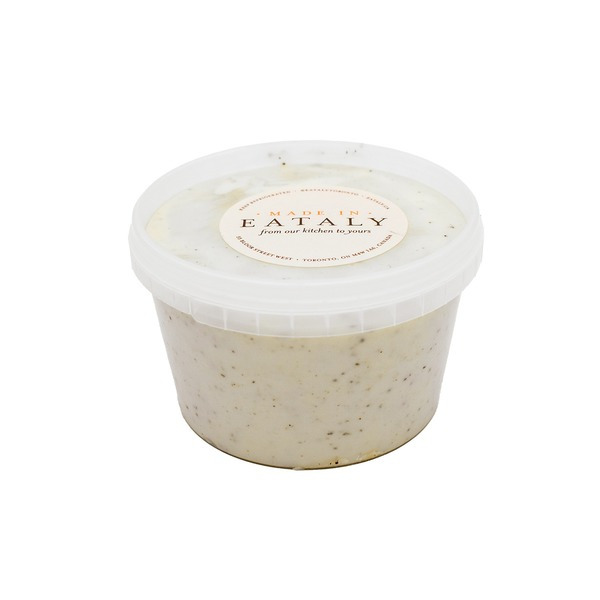Cacio E Pepe
Cacio e Pepe is an Italian pasta dish hailing from Rome. The name, translating to "cheese and pepper," highlights the minimal yet flavorful ingredients used in this recipe: pecorino Romano cheese, black pepper, and spaghetti. It's beloved for its simplicity, being quick to make yet packed with creamy, zesty flavors.
While traditionally using spaghetti, it can be adapted to use other kinds of pasta. Cacio e Pepe is ideal for home cooks seeking an easy but versatile dish that could serve as either a comforting main course or an inspired side dish in Italian cuisine.
55%
CARBS
24%
FAT
20%
PROTEIN
Featured Articles
16 Cacio E Pepe Products
196 Recipes for Cacio E Pepe
1
Romantic Cacio e Pepe for Two
1
Roman Decadence: Simple and Elegant Cacio e Pepe
3
Creamy Bucatini Cacio e Pepe
4
Bucatini Cacio e Pepe
12
Date Night Cacio e Pepe
Vegan Caramelized Cauliflower Cacio e Pepe
2
Vegan Cacio e Pepe
6
Giada De Laurentiis' Cacio e Pepe with Pancetta and Arugula
Cacio E Pepe FAQ
What is Cacio e Pepe?
What type of pasta should I use?
Can I use Parmesan instead of Pecorino Romano?
What is the best way to grate the cheese?
How do I prevent the sauce from clumping?
What can I do if the sauce is too thick?
How do I store leftovers?
What are some variations of Cacio e Pepe?
Expiration & Storage Tips
When does Cacio e Pepe expire?
Cacio e Pepe, a classic Italian pasta dish, varies in expiration based on its components. If the dish is already made, you can keep it in the fridge for 3-4 days. If you've just got the ingredients, hard cheese like Pecorino Romano can last 2-9 months in the fridge, and spaghetti has a shelf life of 1-2 years in the pantry. Peppercorns can last up to 4 years in the pantry! If you freeze the finished dish, it can last 1-2 months.
How do you tell if Cacio e Pepe is bad?
Cacio e Pepe can be a bit tricky to evaluate. For the cheese, sharp or sour smells, obvious mold or discoloration are bad signals. Subsequently, if your pasta's texture seems off (soggy or extremely hard) or it smells funky, it may be past its prime. Peppercorns should remain dry and firm, any softness or visible mold is a no-go. Lastly, if your finished dish has a sour smell, a change in color or texture, or visible mold, it's time to let it go.
Tips for storing Cacio e Pepe to extend shelf life
• Keep your Pecorino Romano cheese in the refrigerator, preferably the cheese drawer, which stays at a consistent temperature.
• Store your spaghetti in a cool, dry, dark place, like a pantry or cupboard.
• Whole peppercorns should be stored in a cool, dark, dry environment as well.
• For the finished dish, store it in an airtight container in the fridge. If you want to freeze it, wrap the pasta dish tightly with aluminum foil or plastic freezer wrap, or place it in a heavy-duty freezer bag.
Health Info
Macros
49g
CARBS
21g
FAT
18g
PROTEIN
Allowed on these diets
LOW FAT
VEGETARIAN
LACTOSE FREE
GLUTEN FREE
Contains these allergens
MILK
WHEAT

